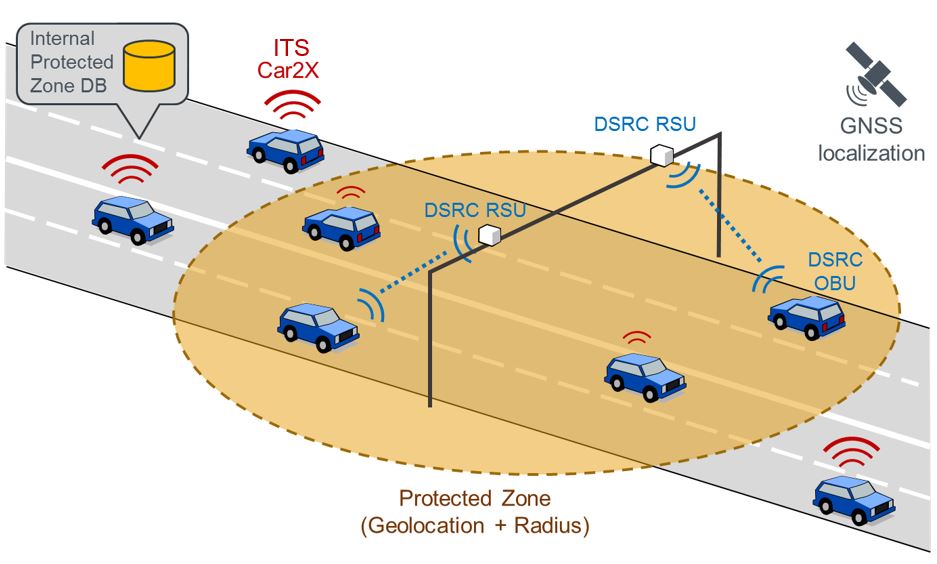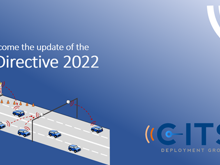ASECAP maintains "Protected Zone Database"
In order to avoid harmful interference to CEN DSRC tolling systems operating at 5.8 GHz, vehicle as well as roadside ITS stations need to activate interference mitigation techniques when being inside a "protected zone", which is a circular area around tolling equipment.
The European Protected Zone Database is maintained by ASECAP and available for download at https://www.asecap-pzdb.com after registration.
Member states, toll chargers, road operators, and road concessionaires include and maintain the geographic locations of their CEN DSRC (and also HDR DSRC) tolling locations as specified in ETSI TS 102 792 in this database. The content of the database can be accessed by ITS equipment manufacturers and integrated in the ITS equipment.

Background information:
The band 5 795 MHz to 5 815 MHz has been harmonized for the use by Transport and Traffic Telematics (TTT), also called European DSRC, by EC Decision 2017/1483/EU and ECC Recommendation 70-03, which is primarily used for road charging systems in Europe and elsewhere. By issuing the Directive 2004/52/EC of the European Parliament and of the Council and Commission Decision 2009/750/EC, the European Union has pointed DSRC to be used for road charging systems in Europe.
By ECC/DEC/(08)01 and ECC/REC/(08)01, the band 5 855 MHz to 5 925 MHz has been designated for Intelligent Transport Systems (ITS). These ECC documents reference ETSI TS 102 792 on mitigation techniques to avoid interference between ITS and DSRC.
Mitigation techniques specified in ETSI TS 102 792 are to be used in the vicinity of DSRC installations, which is described by Protected Zones, unless the ITS station permanently operate in coexistence mode. A Protected Zone is defined as circular area around a DSRC installation, in which ITS stations in vehicles shall activate the coexistence mode in order to minimize interference with the DSRC. An ITS station shall detect DSRC installations based either on:
- The Protected Zone Database integrated into the ITS station;
- A DSRC signal detector. In this case the ITS station is required to generate Protected Zone data at the position of signal detection and broadcast this data via CAM to surrounding vehicles. Thus, an ITS station need to be able to activate coexistence mode by receiving Protected Zone data in a CAM.
